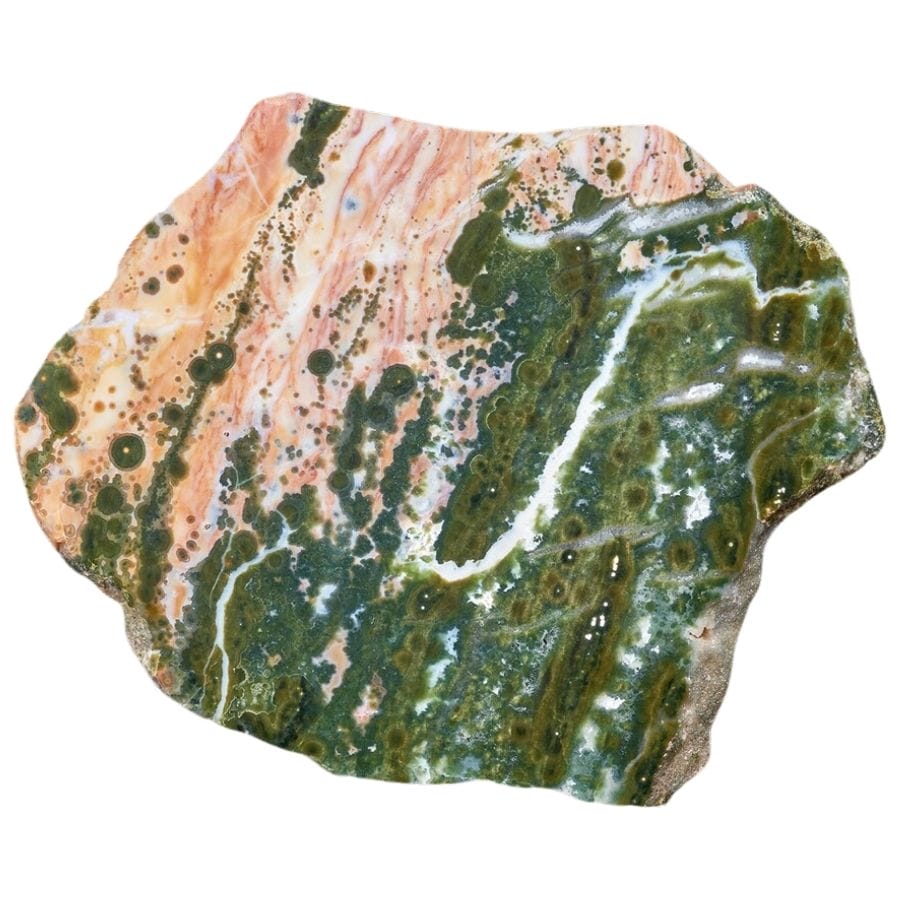Illinois is brimming with rocks, minerals, and gems that can hold incredible value. Whether you’re an avid collector or simply looking for a fun way to earn some extra cash, our state is home to some truly remarkable finds—both rare and beautiful!
As someone who’s spent a fair bit of time exploring the natural wonders of Illinois, I can tell you there’s something thrilling about finding a piece of Earth’s history that could be worth something—or just looks amazing on a shelf.
What makes it even more exciting is that these treasures aren’t locked away in museums; they’re scattered across the state, just waiting for someone like you or me to find them.
I’ll show you what you can find and where you can look to get started. Let’s get going and explore some of Illinois’ hidden treasures!
The Most Valuable Rocks, Minerals, And Gems You Can Find In Illinois
Here’s what you can actually find when you go looking in our state.
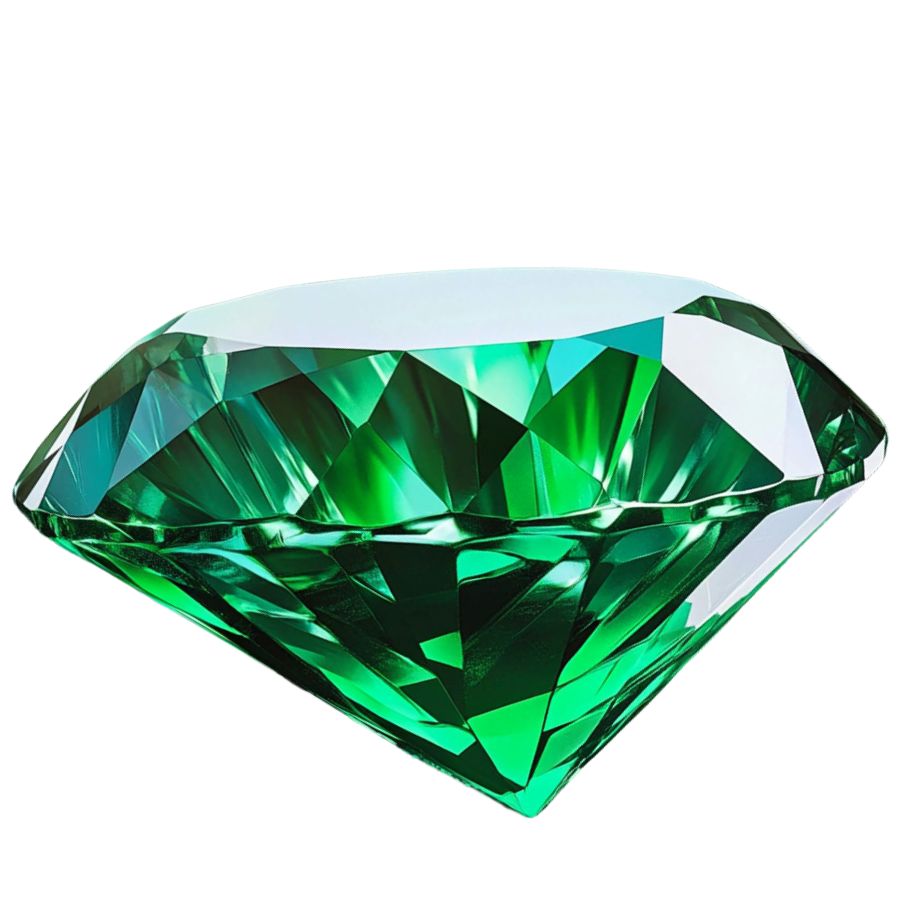
Diamond
In Illinois, most diamonds discovered are the result of glacial activity during the Ice Age. As glaciers advanced and retreated, they carried with them material from Canada, including small diamonds.
The types of diamonds found here are typically rough and uncut, often smaller in size, but they’re still a thrill to uncover.
Why Diamonds Are Valuable
Diamonds aren’t just valuable because they sparkle beautifully in jewelry. Their hardness makes them incredibly useful in industrial applications, such as cutting tools and machinery.
Beyond their practicality, diamonds symbolize luxury and endurance. Even a small diamond found in Illinois carries a sense of wonder and connection to the state’s natural history, making it priceless to those who find one.
Great Places to Find Diamonds in Illinois
If you’re ready to try your luck, there are a few hotspots to find diamonds in Illinois. Keep in mind, that most discoveries are accidental, but exploring these areas adds a layer of adventure to your search.
- Fayville Area: Near the southern tip of Illinois, the Fayville area is known for its rich geological history. The Mississippi River’s ancient pathways here have uncovered various stones, including the occasional diamond.
- Mount Vernon: Located in southern Illinois, Mount Vernon is surrounded by glacial deposits. It’s worth exploring open fields and creek beds for the chance to spot a diamond or other unique stones.
- Macomb Area: The Macomb region has a history of glacial activity, leaving behind gravel and sediment deposits where diamonds could be hiding. Local streams and small riverbanks are excellent places to dig and sift for treasures.
Visit our in-depth Illinois guide for more Diamond locations.
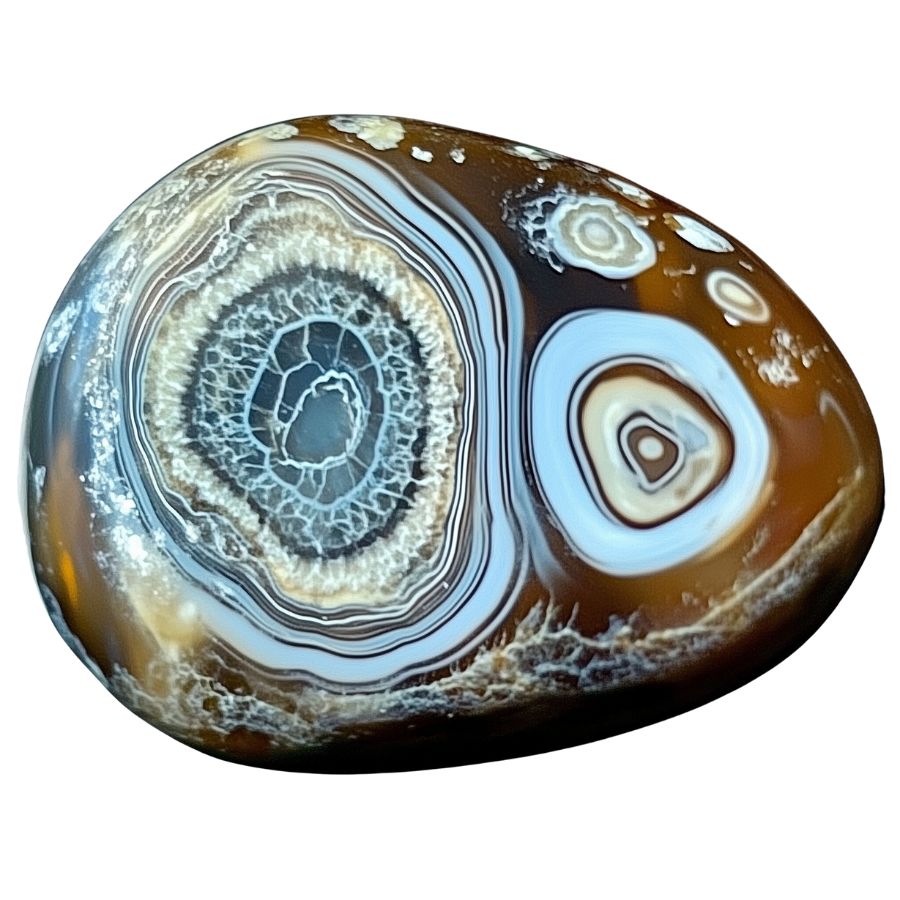
Agate
Agate is a variety of quartz, specifically a type of chalcedony, known for its mesmerizing bands and patterns.
These stones form over thousands of years in volcanic rock, and here in Illinois, we’re lucky to have some amazing places where you can find these unique and stunning stones.
You can find agates like Lake Superior Agate, with its red and orange tones, Moss Agate, which has delicate plant-like patterns, or Banded Agate, known for its striking stripes. Each one is unique, making them a joy to discover.
Why Agates Are Valuable
Agates are prized for their natural beauty and rarity. Each piece is like a tiny masterpiece created by nature, which makes them highly sought after by collectors and jewelry makers.
They also have personal value—finding one yourself feels like uncovering a hidden treasure. Plus, their durability and vivid patterns make them perfect for polishing and displaying.
Great Places to Find Agate in Illinois
If you’re ready to explore, here are some of the best spots to search for agates in Illinois:
Warsaw Area: Close to the Mississippi River, the Warsaw area has gravel bars and quarries where agate hunters often have great luck.
Hamilton Area: This area, with its rocky riverbanks and gravel beds, is a prime location to hunt for agates, especially along the waterways.
Bishop Hill: Known for its historic charm, Bishop Hill also offers opportunities to find agates in fields and small streams nearby.
Find the best Agate spots across Illinois in our complete guide.
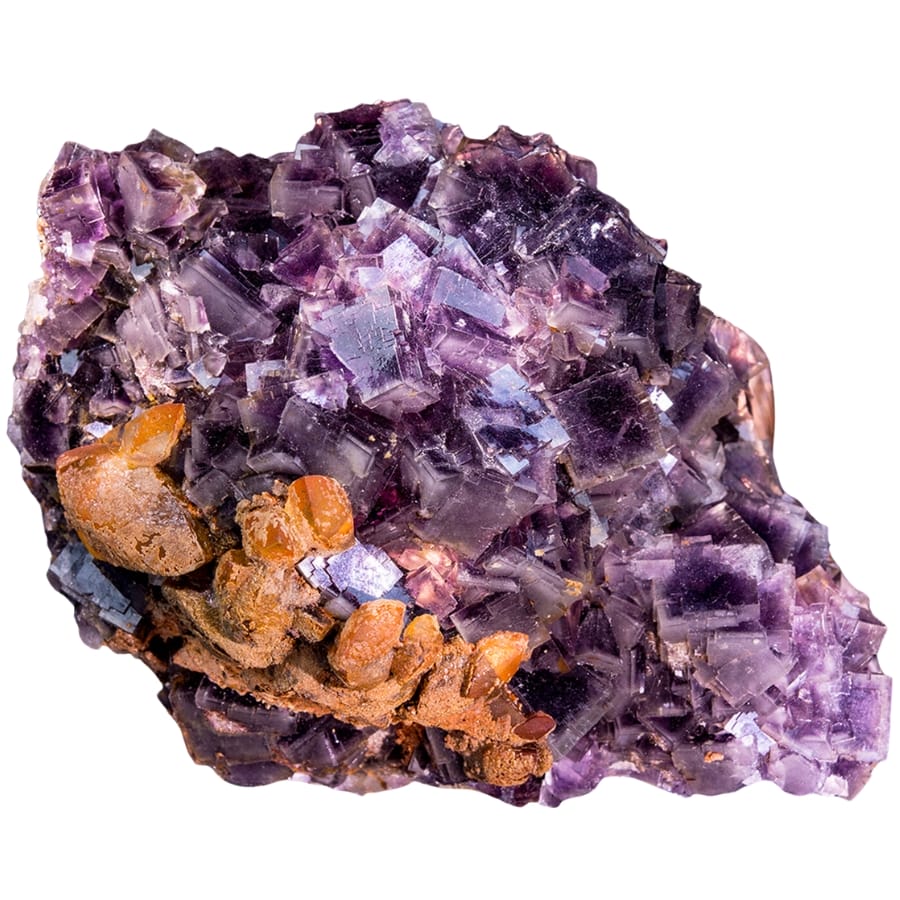
Fluorite
Fluorite, also called fluorspar, is a beautiful mineral known for its vibrant colors and crystal formations. It’s actually the official state mineral of Illinois!
The most common types found here range from clear and purple to green and blue. Some specimens even have banded patterns, which make them extra special and highly collectible.
Why It’s Valuable
Fluorite isn’t just pretty to look at—it’s also really useful. Industrially, it’s used in making steel, aluminum, and even glass. Historically, Illinois was the largest producer of fluorite in the United States, which helped fuel our local economy for decades.
Plus, for collectors and geology buffs like us, the high-quality crystals found here are highly sought after around the world.
Great Places to Find It Here
If you’re looking to hunt for fluorite or just learn more about it, Illinois has some fantastic spots. Here are a few places I’d recommend:
- Hicks Dome: A fascinating geological site in Hardin County, Hicks Dome is known for its unique mineral formations, including fluorite.
- Cave-in-Rock State Park: This area is the heart of Illinois’ fluorite mining history. It’s located in Hardin County, where most of the state’s fluorite was mined.
- Southern Illinois Fluorspar District: This district encompasses several areas in Hardin and Pope counties, where fluorite mining once thrived. While mining has ceased, the region is still an excellent spot to explore for remnants of fluorite.
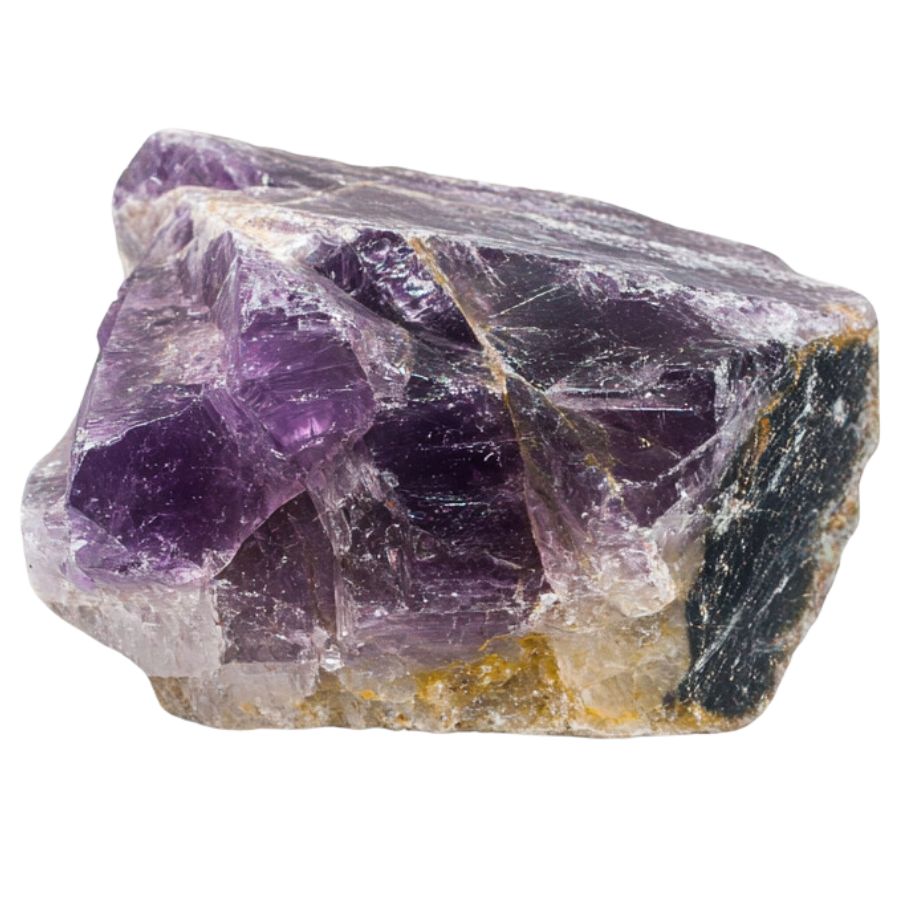
Amethyst
Amethyst is essentially quartz that gets its purple hue from iron and natural irradiation. The shade can range from pale lavender to deep, royal purple, depending on the conditions where it formed.
In Illinois, amethyst is usually found as part of geodes. These geodes, often unearthed in southern parts of the state, might not always contain amethyst, but when they do, it’s a real treat.
The crystals here tend to be smaller but can showcase a vibrant color, perfect for collectors and hobbyists alike.
Why It’s Valuable
For starters, Amethyst rich color and crystal formations make it a favorite for jewelry and home décor. It’s also known as the birthstone for February, which adds sentimental value.
Beyond aesthetics, some people believe amethyst has calming and healing properties, making it popular in wellness practices. Whether you’re into crystals for their beauty or their vibes, amethyst checks all the boxes.
Great Places to Find It Here
If you’re up for a bit of an adventure, there are some fantastic places in Illinois where you can find amethyst. Here are my top picks:
- Mississippi River Valley: Certain spots along the riverbed, especially near the southern end of the state, have been known to yield geodes. It’s a bit of a hunt, but totally worth it when you crack one open and find a gleaming amethyst.
- Keokuk Geode Beds: This area is famous for its abundance of geodes. While most geodes contain quartz, some lucky hunters have cracked open ones filled with beautiful amethyst crystals.
- Hamilton County Rock Collecting Sites: Known for geode discoveries, this region is a hotspot for rockhounds. Bring some sturdy tools and a bit of patience!
Our full Illinois guide shows you where to find more Amethyst.
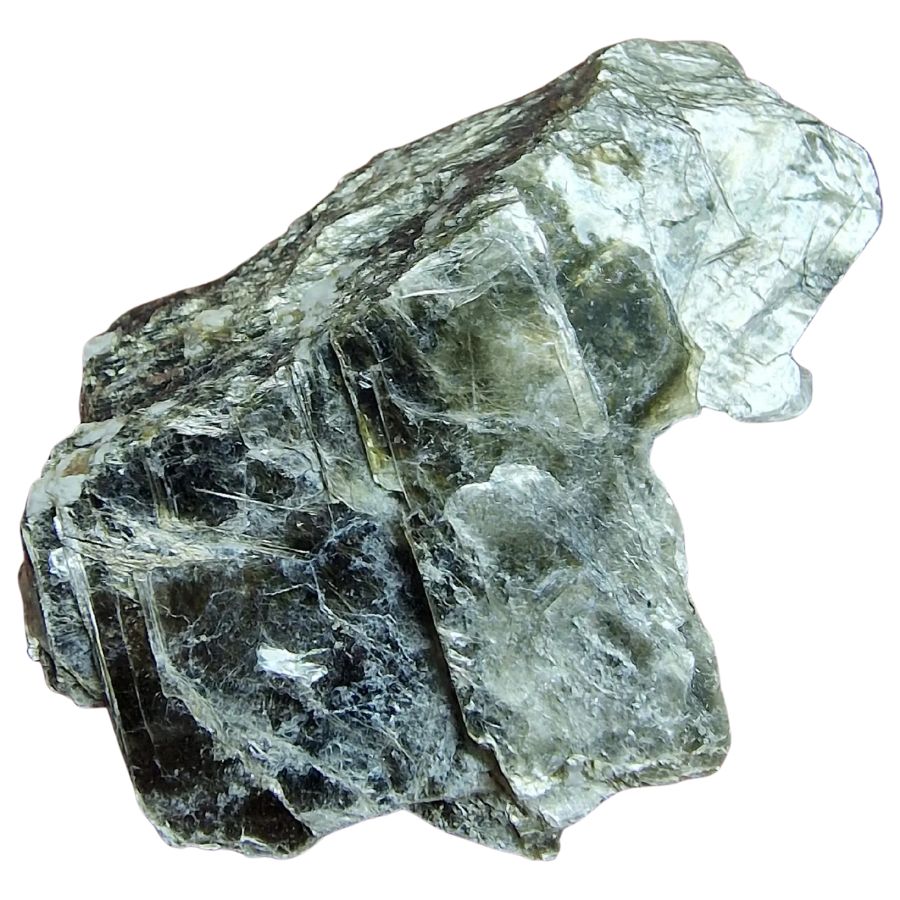
Silver
In Illinois, silver is often found mixed with other ores, especially lead and zinc. These types of silver deposits are called “polymetallic,” meaning they contain several valuable metals.
In our state, silver has been historically recovered from galena, a lead sulfide ore that often carries traces of silver. While pure silver nuggets are rare, the silver-bearing ores are what give Illinois its connection to this metal.
Why Silver is Valuable
Silver’s value goes beyond its beauty. It’s used in jewelry and coins, but it’s also essential for industrial purposes like electronics, solar panels, and even medicine.
Because silver is a great conductor of electricity and has antimicrobial properties, it plays a big role in modern technology. Plus, its status as a precious metal means it’s often seen as a safe investment during uncertain economic times.
Great Places to Find Silver in Illinois
If you’re interested, Illinois offers a few spots where you can find silver. Here are three recommendations:
- Southern Illinois Fluorspar District: In the southeastern part of the state, this district is famous for its fluorite, but silver has been found here too, often associated with lead and zinc ores. It’s a great area for rockhounds and history buffs alike.
- Shawnee National Forest: Enthusiasts sometimes discover traces of silver-bearing ores while exploring the area’s geological diversity.
- Mississippi Valley Deposits: The region along the Mississippi River, especially near the Illinois-Iowa border, is known for its mineral deposits. You might find silver mixed in with other minerals like galena or fluorite.
Explore silver sites throughout Illinois with our detailed guide.
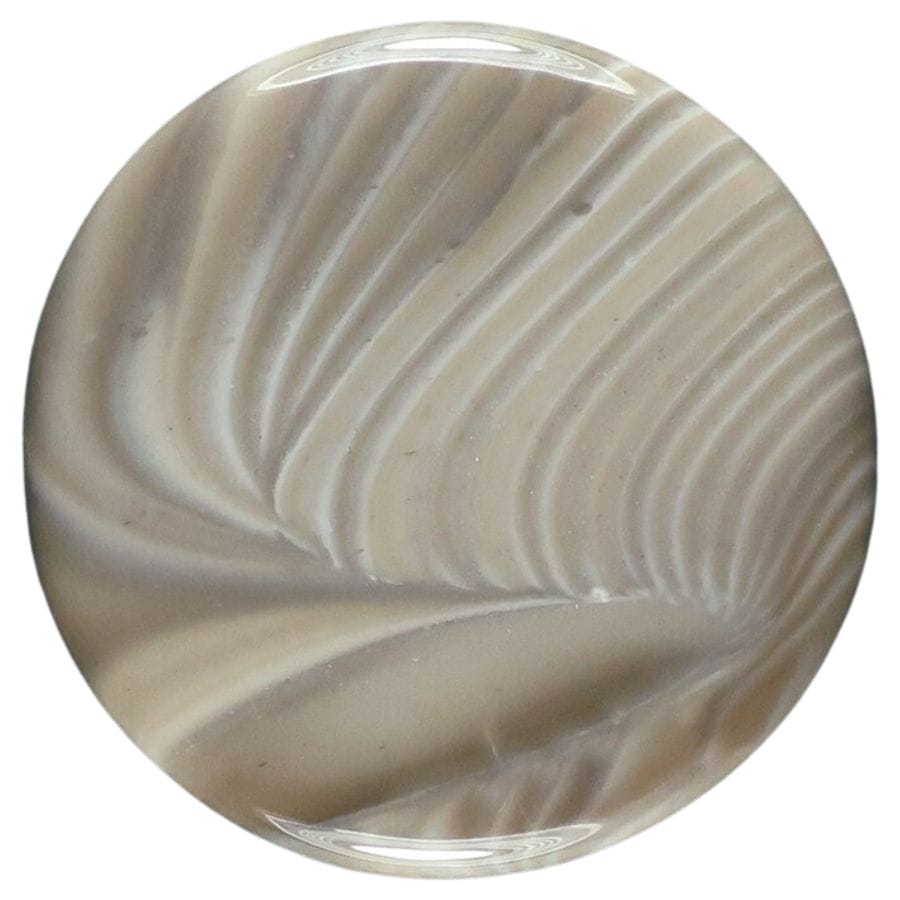
Chert
Chert is a hard, sedimentary rock made mostly of quartz. It’s formed over millions of years as silica from water accumulates in sedimentary layers, eventually hardening into this smooth, dense material.
It’s known for its variety of colors and patterns, ranging from earthy browns and grays to vibrant reds and greens. If you’ve ever picked up a rock and marveled at its smooth surface or striking colors, chances are it might’ve been chert.
Why It’s Valuable
Chert has been prized for centuries, starting with Indigenous peoples who used it to make tools and weapons. Today, it’s sought after by geologists, collectors, and even artists.
Its durability and striking appearance make it perfect for jewelry, decorative pieces, or just as a keepsake from a day out exploring Illinois’ natural beauty.
Great Places to Find Chert in Illinois
If you’re itching to find some chert yourself, Illinois has plenty of spots to explore. Here are my top recommendations:
- Cache River State Natural Area: Down in southern Illinois, this unique wetland area offers plenty of opportunities to find chert. Check along the riverbanks and gravel bars for your best chance at discovering it.
- Mississippi Palisades State Park: Located along the Mississippi River, this park is a treasure trove of geological wonders. You can find chert along the riverbanks or embedded in the limestone bluffs.
- Starved Rock State Park: Known for its canyons and waterfalls, Starved Rock is also a great place to spot chert in its natural habitat, especially near creek beds and rock outcrops.
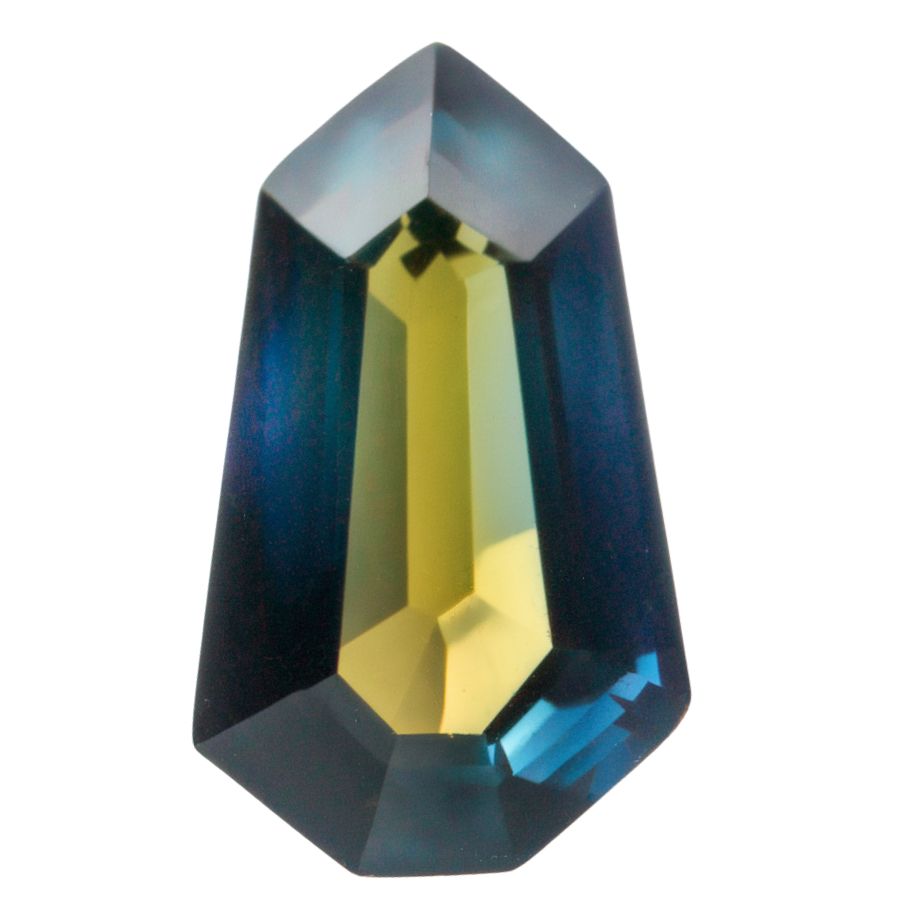
Sapphire
Sapphire is a precious gemstone made of corundum, known for its stunning blue hue, though it can come in other colors too, like yellow, pink, and green.
In Illinois, the sapphires you’ll come across are often alluvial, meaning they’ve been transported by rivers and streams over time. You might also spot small, natural sapphire crystals mixed with gravel or in sediment deposits.
Why It’s Valuable
Sapphires are prized for their incredible beauty and durability. They rank a 9 on the Mohs hardness scale, which makes them one of the hardest gemstones, second only to diamonds.
Their vibrant colors and sparkling clarity make them a favorite for jewelry, and collectors love them for their rarity, especially when found in unexpected places like Illinois.
Great Places to Find It Here
If you’re up for a treasure hunt, there are a few great spots in Illinois where you might get lucky finding sapphires. Here are my top recommendations:
- Southern Illinois Stream Beds: The streams and creeks in this part of the state can sometimes hide gemstones like sapphires among their sediments, especially after heavy rains.
- Rock River Basin: This area has a history of yielding alluvial gemstones, including small sapphires. Look in gravel bars and riverbeds after the water levels drop.
- Galena Territory: Known for its rich mineral deposits, this region can surprise you with rare finds like sapphire crystals, especially near old mining areas.
Check out our complete guide for the best place to find Sapphire in Illinois.

Opal
Opal is a hydrated silica mineral that comes in many varieties, from dazzling precious opals with vibrant colors to more subdued common opals. In Illinois, we mostly find common opals, which are often milky white, cream, or even a pale pink.
These opals might not have the flash of Australian opals, but they’re still beautiful and special, especially when you know you’ve found one right here at home (we’ve documented Illinois’s Opal sites in our guide).
Why It’s Valuable
Opals are valuable for their rarity and unique appearance. The common opals found in Illinois might not fetch sky-high prices, but their value lies in their connection to the state’s natural history.
Many collectors cherish Illinois opals for their distinct local charm and the adventure of finding them in the wild.
Great Places to Find Opal in Illinois
If you’re ready to go opal hunting, I’ve got a few suggestions for spots where you might strike gemstone gold. Here are three places to check out:
- Hickory Creek Reserve: Located near Joliet, this spot is great for exploring and has been known to reveal small opal fragments along with other fascinating minerals.
- Union County: This southern Illinois county offers great opportunities for exploring creek beds and rocky areas where opal fragments have been known to turn up.
- Alexander County: Located near the Mississippi River, this area is ideal for searching through gravel and sediment deposits for opals and other interesting minerals.
Find Opal locations in Illinois by checking our full resource guide.
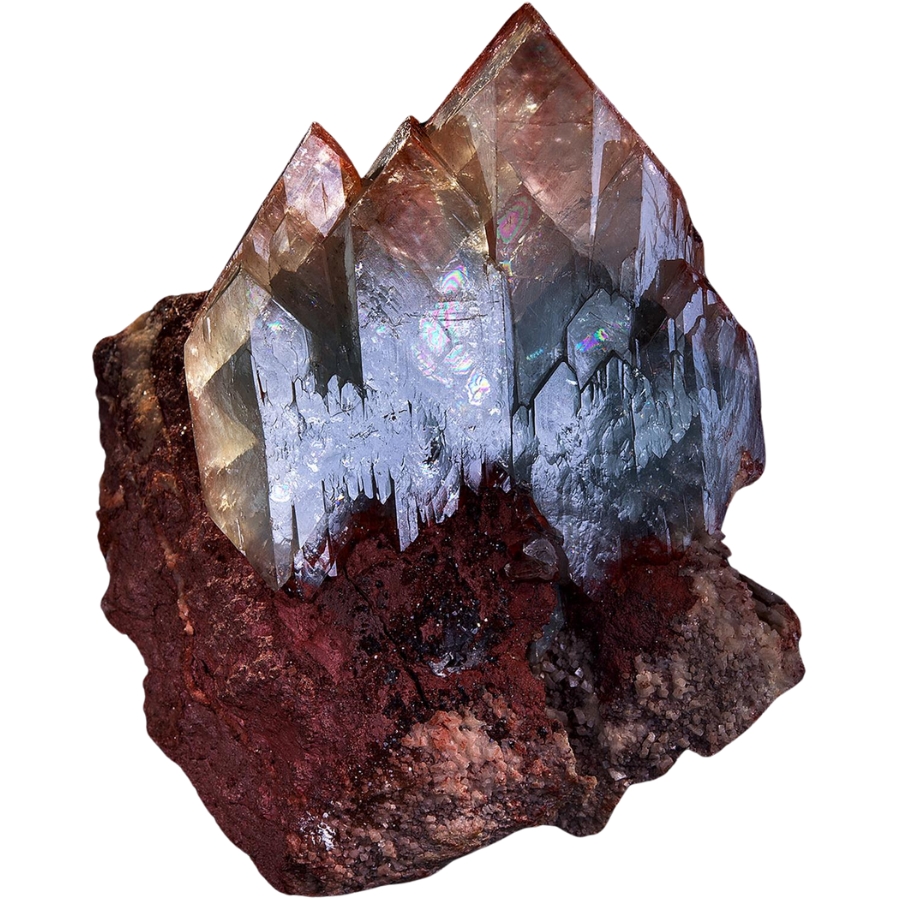
Barite
Barite, or barium sulfate (BaSO₄), is a mineral prized for its weight and unique appearance. It forms in a variety of colors and shapes depending on the conditions of its formation.
In Illinois, we commonly find barite as tabular crystals or compact masses. The mineral often shows up in association with other minerals like fluorite, galena, and calcite, especially in the southern part of the state.
Why Barite Is Valuable
Barite isn’t just a collector’s item—it has some serious industrial value too. Thanks to its high density, it’s a key ingredient in drilling mud used for oil and gas exploration. It also finds its way into paints, plastics, and even radiation shielding materials.
For rockhounds, though, it’s the sheer beauty and uniqueness of the crystals that make barite worth the hunt.
Great Places to Find Barite in Illinois
If you’re itching to go barite hunting, Illinois has some fantastic spots where you can find this mineral. Here are my top recommendations:
- Rosiclare: Once a major mining town, Rosiclare is still a treasure trove for mineral enthusiasts. Barite specimens can often be found in the remnants of mining operations or nearby creek beds.
- Hardin County: This area, part of the Illinois-Kentucky Fluorspar District, is a hotspot for barite crystals, often found alongside fluorite and galena. Old mining dumps are great places to start searching.
- Cave-in-Rock State Park: While primarily known for fluorite, the park and nearby areas are excellent for finding barite. It’s a scenic spot, so even if you don’t find much, it’s worth the trip.
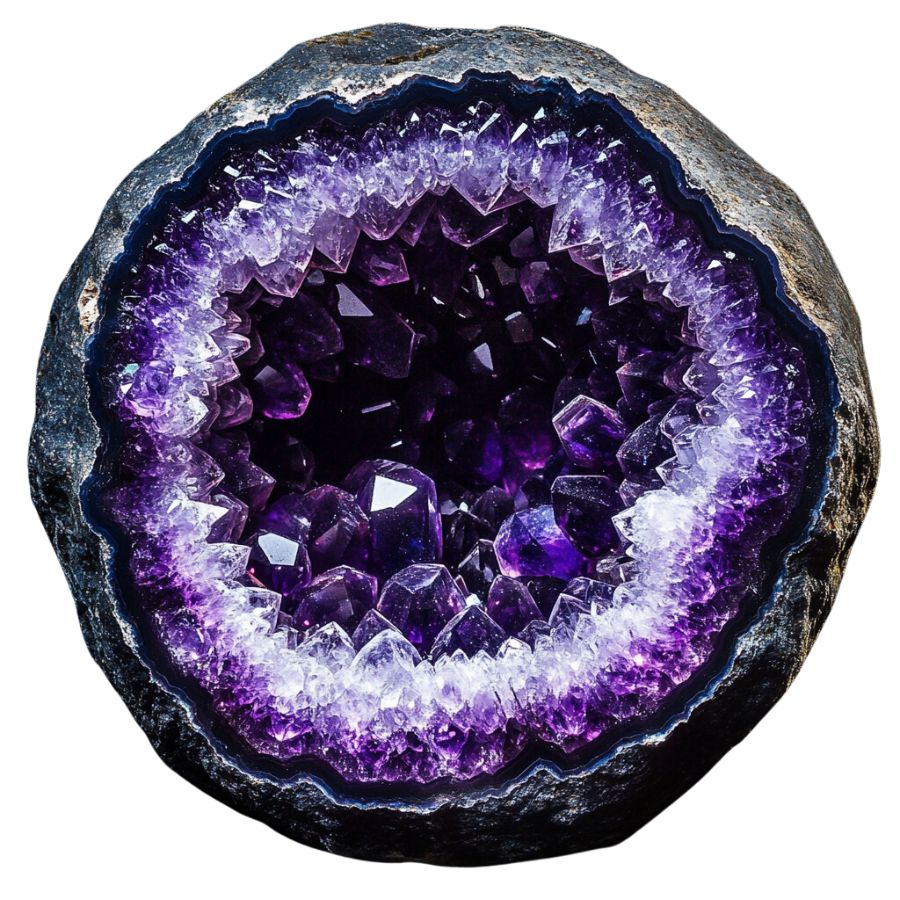
Geode
Geodes are hollow rocks lined with crystals or mineral formations inside. They form over millions of years as mineral-rich water seeps into hollow spaces like air pockets in volcanic rock or spaces left by decayed organic matter.
In Illinois, you’ll find geodes filled with quartz crystals, including clear, smoky, or amethyst varieties. Some even contain calcite, pyrite (fool’s gold), or other unique minerals.
These are especially common in the western part of the state, which is known for its rich geologic history. You can find our existing guide about Geode deposits in Illinois.
Why Geodes Are Valuable
Geodes aren’t just pretty to look at; they’re valuable for many reasons. First, they’re prized by collectors and gem enthusiasts for their uniqueness—no two geodes are exactly alike!
Second, they’re often used in jewelry and home décor. Finally, geodes give us a glimpse into Earth’s geological history, which is fascinating for science buffs like me.
Great Places to Find Geodes in Illinois
If you’re looking to hunt for geodes, Illinois has some great spots to check out. Here are a few recommendations:
- Keokuk Geode Beds: This area is world-famous for its geodes, and even though it’s technically more on the Iowa side, the nearby Mississippi River area on the Illinois side is a hot spot for finding these beauties.
- Mississippi River Bluffs: The rocky cliffs and outcroppings along the river are a great place to find geodes, especially after a heavy rain has washed away loose dirt.
- Hamilton and Nauvoo: The creeks and riverbeds here are known for producing gorgeous quartz-filled geodes. Bring a hammer and some safety goggles to crack them open!
Access our complete Illinois guide to locate more Geode deposits.
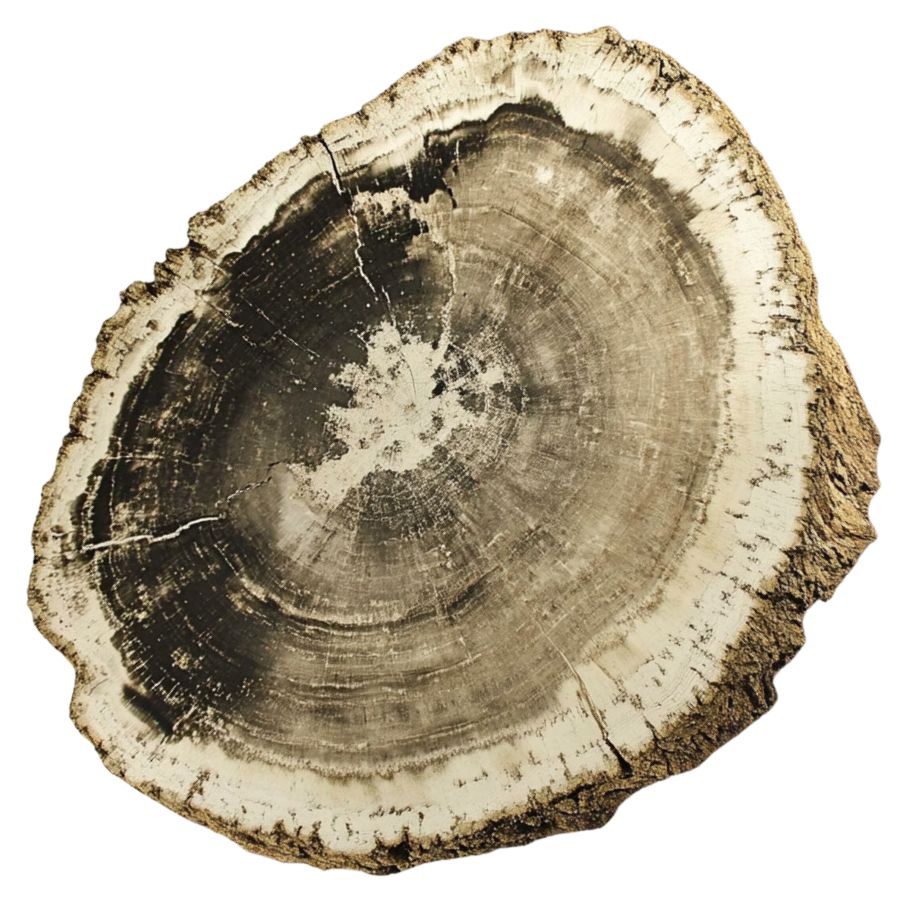
Petrified wood
Petrified wood is fossilized wood, where the organic material has been replaced by minerals, usually quartz. In Illinois, you’ll mostly find pieces that originated from trees in ancient forests that existed millions of years ago.
The types found here are often a mix of hardwoods like ancient relatives of oak or maple, though some softwood varieties are occasionally discovered. Each piece carries its own story, locked in its grain patterns and mineral makeup.
Why It’s Valuable
Petrified wood isn’t just a rock—it’s a time capsule. For collectors, its beauty lies in its vibrant colors and unique textures, which are the result of minerals like iron, manganese, and copper infusing the wood during fossilization.
It’s also an important scientific artifact, giving geologists clues about Illinois’ prehistoric environment. Whether you’re into geology, history, or simply want a striking display piece, petrified wood has something for everyone.
Great Places to Find It Here
If you’re itching to hunt for some petrified wood, Illinois has a few excellent spots to explore. Here are some of my favorite places to go looking:
- Mazon Creek Fossil Beds: While it’s best known for its plant and animal fossils, you can sometimes stumble upon pieces of petrified wood among the treasures.
- Southern Illinois Riverbanks: Areas along the Mississippi and Illinois rivers, especially where erosion exposes ancient sediment layers, are great for spotting petrified wood.
- Fayville Area: In southern Illinois, the Fayville area offers excellent opportunities to discover petrified wood. This region has been known for yielding well-preserved pieces, so keep an eye out while exploring local terrain.
Browse our extensive guide to uncover more Petrified wood locations in Illinois.
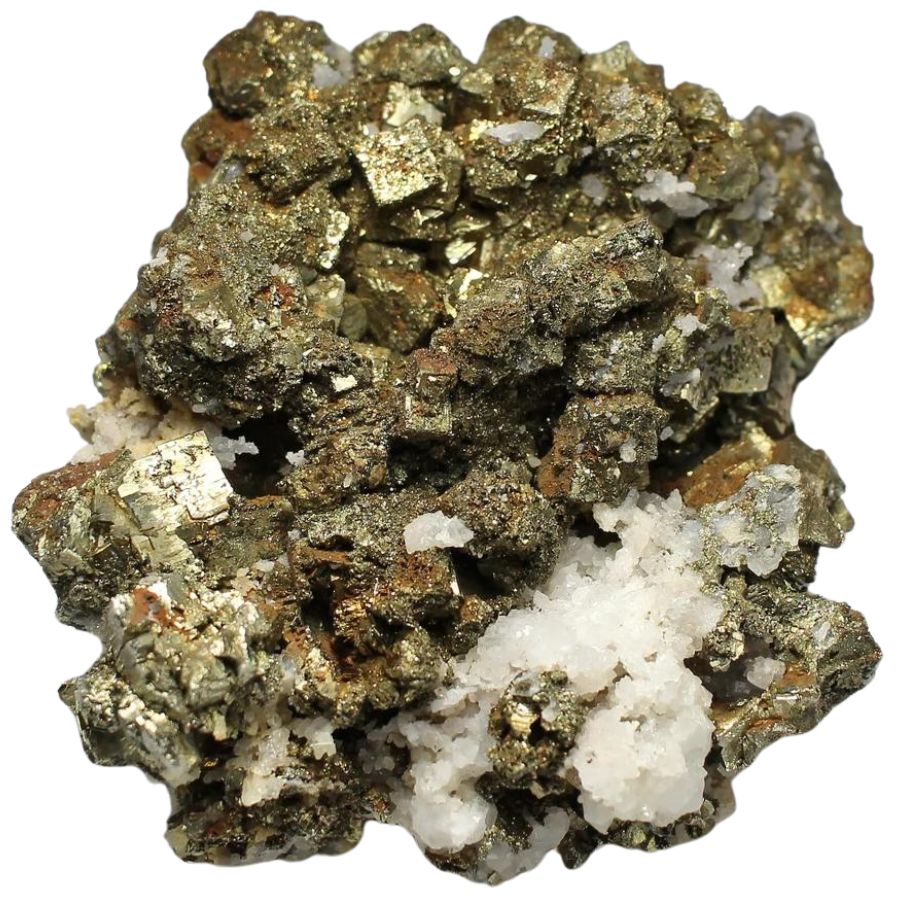
Pyrite
Pyrite, often called “fool’s gold” because of its shiny, gold-like appearance, is a fascinating mineral that can be found right here in Illinois. It’s made up of iron and sulfur, forming stunning cubic crystals and brassy metallic surfaces.
Why It’s Valuable
While pyrite isn’t worth much as a precious metal, it’s valuable for its beauty, scientific significance, and historical uses. Collectors prize it for its dazzling appearance, and it’s often used as a teaching tool in geology.
Plus, those stunning pyrite suns can fetch a good price among mineral collectors because of their rarity and distinct look.
Great Places to Find Pyrite in Illinois
If you want to hunt for some pyrite, Illinois has plenty of great spots. Whether you’re an experienced rockhound or just want to spend a fun day exploring, here are some of the best places to look:
- Fluorite Mines in Hardin County: In southern Illinois, especially near Rosiclare, old fluorite mines are often hotspots for pyrite. The cubic forms found here can be stunning.
- Kankakee River State Park: Known for its diverse geology, you might stumble upon small pyrite crystals in the park’s exposed rock formations or along the riverbanks.
- Quarries near Joliet and Lemont: These areas are rich in sedimentary rock, where pyrite often forms. Be sure to check with the quarry operators for permission before collecting.
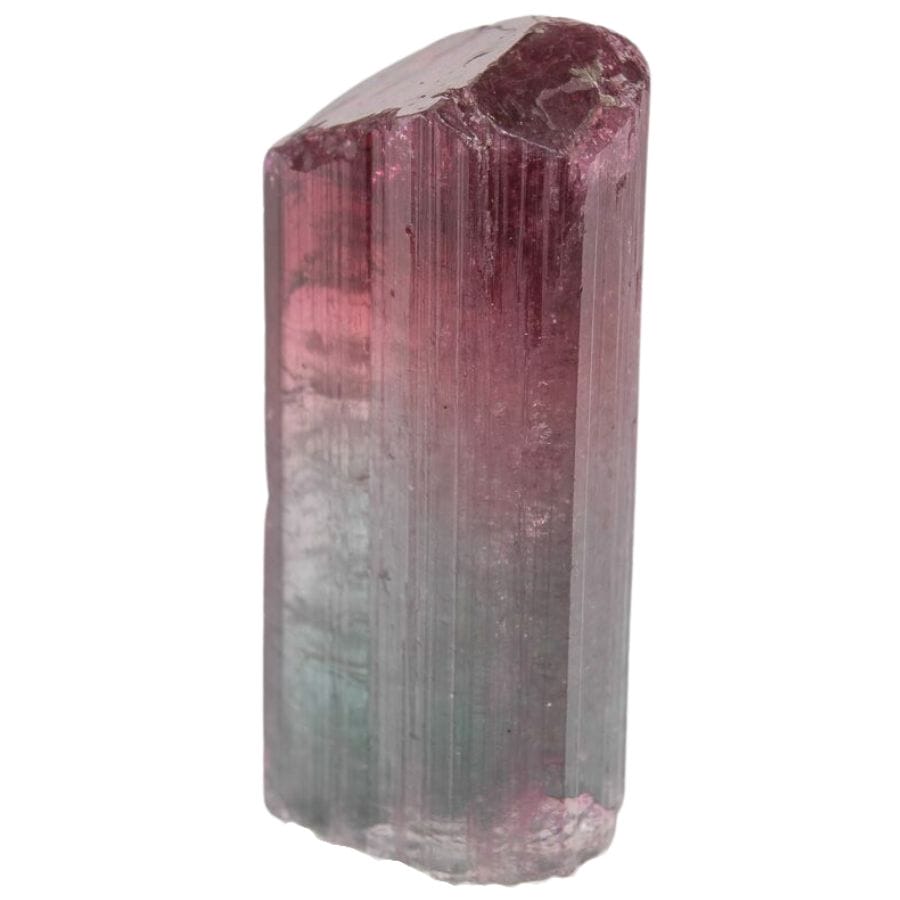
Tourmaline
Tourmaline is a crystal-rich mineral known for its wide range of colors, from deep black to vibrant pink, green, and even multicolored varieties.
In Illinois, black tourmaline, also known as schorl, is the most common type you’ll encounter. While colorful varieties like pink or green are rarer here, they’re sometimes found in areas with rich pegmatite deposits.
Why It’s Valuable
Tourmaline is prized for its striking beauty and its metaphysical properties. People believe it offers protective and healing energies, making it popular in jewelry and spiritual practices.
Beyond that, tourmaline has practical uses, such as its ability to generate electric charge under pressure, which has applications in electronics. Its natural durability also makes it a fantastic choice for collectors and artisans alike.
Great Places to Find It Here
Illinois has some great spots to go rockhounding if you’re eager to find tourmaline for yourself. Here are a few of my favorite recommendations:
- Gravel Pits Near Central Illinois: In areas like Peoria and Springfield, gravel pits can sometimes produce small pieces of tourmaline. These spots are excellent for beginners looking to try their hand at rockhounding without extensive hiking.
- Southern Illinois Rock Formations: The Shawnee National Forest area has some fascinating geological features. While it’s known for quartz and fluorite, black tourmaline can occasionally be found in pegmatite-rich areas nearby.
- Northwestern Illinois Quarries: Many of the quarries around Galena have yielded mineral specimens, including tourmaline. Always check if access is permitted and bring proper tools for safe digging.
Our comprehensive Illinois guide reveals more Tourmaline hotspots.
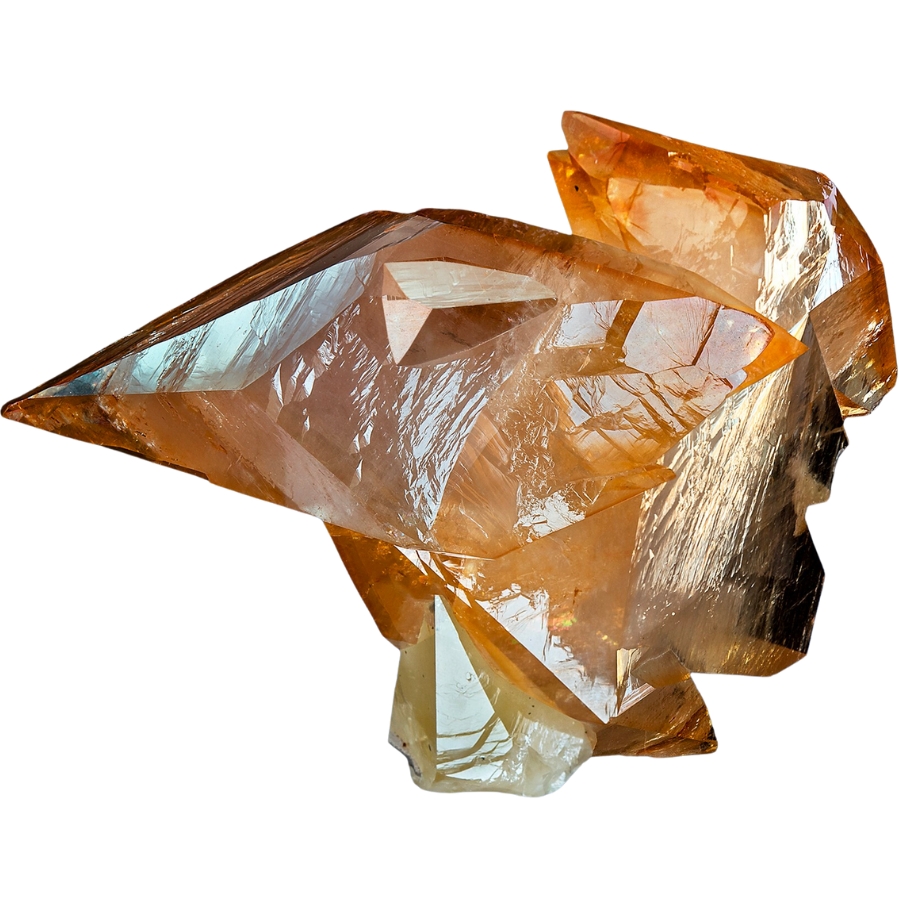
Calcite
Calcite is a common mineral made of calcium carbonate (CaCO₃). It forms in a variety of environments, including caves, rivers, and sedimentary rock layers, and it’s known for its crystal structure and wide range of colors.
Here in Illinois, calcite is a fascinating part of our geological story, found in forms like dogtooth spar, stalactites, and even large crystal clusters.
Why It’s Valuable
Calcite has both scientific and economic value. Geologists use it to study Earth’s history because its growth patterns and inclusions can tell us about ancient environments.
Economically, calcite is mined for use in construction materials, agricultural lime, and even in manufacturing products like cement and glass. For collectors, its beauty and variety make it a prized mineral.
Great Places to Find It in Illinois
If you’re ready to explore and find some calcite for yourself, Illinois has some excellent spots for rockhounds. Here are three must-visit locations:
- Thornton Quarry: Near Chicago, this massive quarry is known for its impressive calcite veins embedded in dolostone, though access may require special permission.
- Cave-in-Rock State Park: Located along the Ohio River, this park is famous for its limestone caves, where you can spot calcite formations like stalactites and stalagmites.
- Rosiclare Fluorspar District: In southern Illinois, this historic mining area is a treasure trove for calcite crystals, often found alongside fluorite.
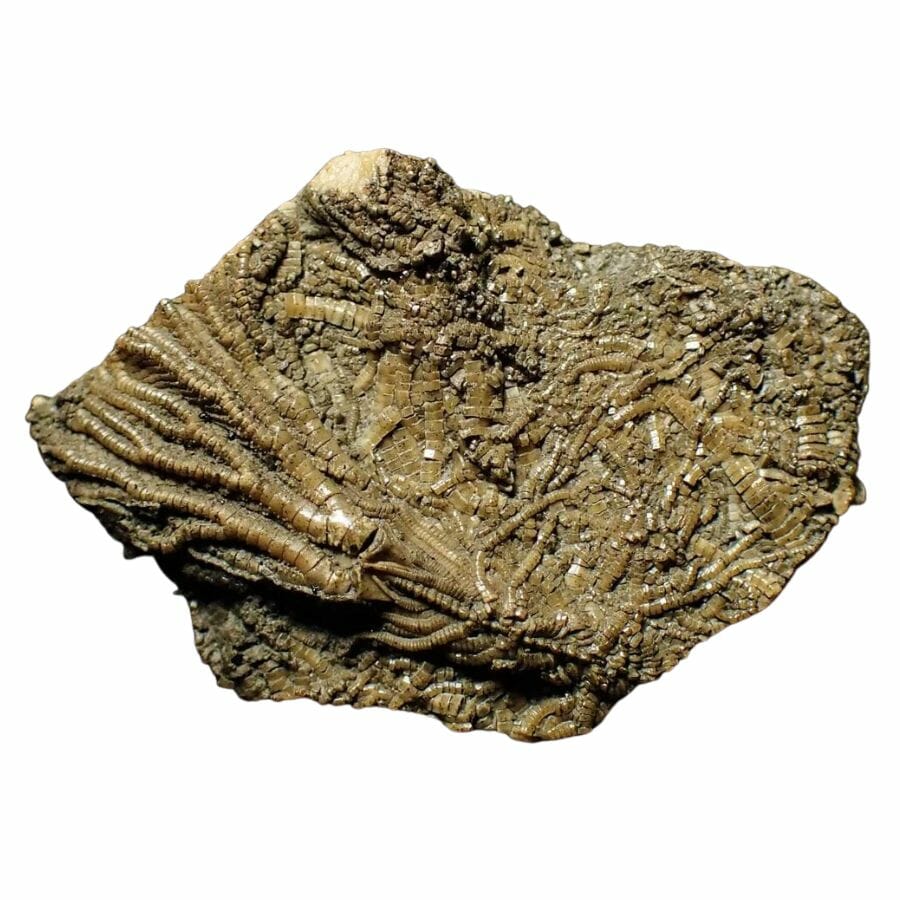
Fossils
Fossils are the preserved remains or traces of ancient organisms. In Illinois, you’ll mostly find fossils from the Paleozoic Era, which dates back around 500 million years. Back then, much of the state was covered by a shallow sea.
That’s why most of the fossils here are marine creatures like trilobites, brachiopods, and crinoids.
You can also find plant fossils, especially from the coal swamps of the Carboniferous period, like ferns and tree bark impressions (your complete STATE STONE resource is here).
Why Fossils Are Valuable
Fossils are more than just cool rocks to collect—they’re like time capsules! They give scientists clues about what the environment was like long before humans showed up. They also teach us how plants and animals have evolved over time.
For us locals, they’re a way to connect with the land and appreciate the deep history beneath our feet. Plus, fossil hunting can be a super fun hobby to share with friends and family!
Great Places to Find Fossils in Illinois
If you’re itching to go fossil hunting, Illinois has plenty of great spots to explore. Here are some of my favorite places:
- Mazon Creek Fossil Beds: Located in Grundy and Will Counties, this area is world-famous for its well-preserved plant and animal fossils, like the Tully Monster, Illinois’ state fossil.
- Rock Island County: Near the Mississippi River, this area is known for its abundance of crinoids and brachiopods from ancient sea floors.
- Fulton County: Check out some of the old coal mines or spoil piles here for plant fossils, including beautifully detailed ferns.
Find more Fossils spots in our complete Illinois guide.
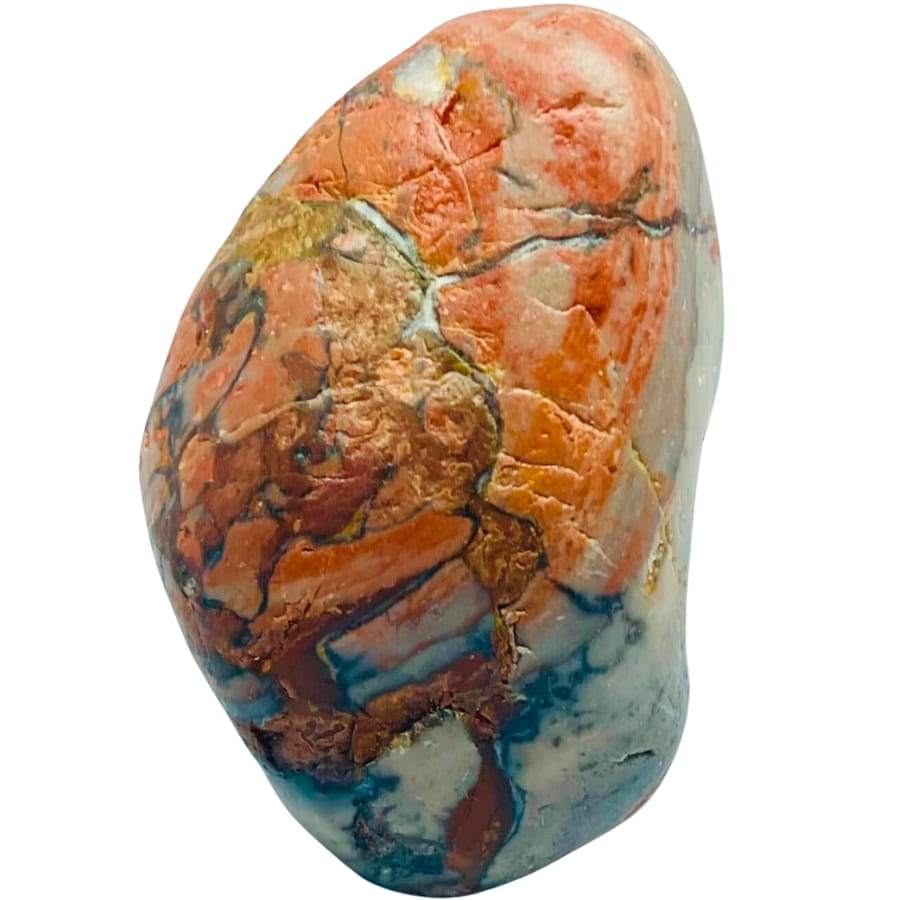
Jasper
Jasper is a type of microcrystalline quartz, known for its vibrant colors and smooth texture. In Illinois, you’ll come across several types, including red jasper, picture jasper, and brecciated jasper.
These variations form due to impurities like iron or other minerals, giving each one its unique colors and patterns.
Why Jasper Is Valuable
Jasper isn’t just a pretty stone—it’s got a rich history and practical uses. People love it for its beauty, using it in jewelry and decorative pieces. On top of that, jasper has been valued for centuries for its metaphysical properties, believed to bring grounding and healing energy. For rock collectors, it’s a prized find because of its wide variety of colors and the stories it tells about geological history.
Great Places to Find Jasper in Illinois
If you’re on the hunt for jasper, Illinois has some fantastic spots. Here are my top recommendations:
- Cache River Basin: This unique wetland area in southern Illinois is not only beautiful but also a great place to find jasper. Look along the riverbanks and exposed gravel beds for colorful pieces.
- Southern Illinois Creek Beds: Many creek beds in southern Illinois are home to jasper, especially around the Shawnee National Forest. Keep an eye out for red and brecciated jasper in particular.
- Rock Quarries Near Joliet: Some abandoned rock quarries in the Joliet area occasionally reveal jasper pieces.
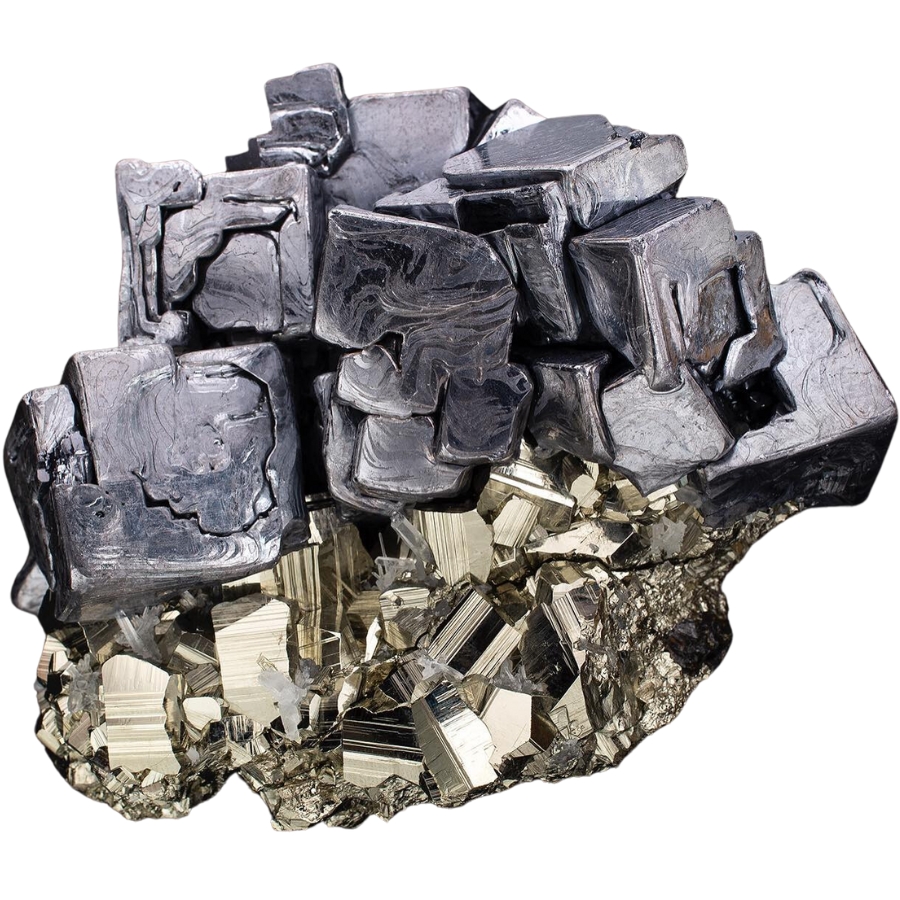
Galena
Galena is a lead sulfide mineral and the main source of lead. It’s got this metallic, silvery-gray look that makes it stand out. Here in Illinois, especially in the northwestern part of the state, galena is pretty common.
You’ll mostly find pure galena, but sometimes it’s mixed with other minerals like sphalerite (a source of zinc) or calcite.
Why It’s Valuable
Galena is valuable for a few reasons. First, it’s the primary source of lead, which is used in everything from batteries to radiation shielding. Historically, galena mining was a major industry in Illinois, especially during the 19th century.
Beyond its practical uses, galena also appeals to collectors because of its striking metallic crystals that sometimes form perfect cubes.
Great Places to Find It Here
If you’re up for an adventure, there are some awesome spots in Illinois where you can hunt for galena.
- Galena, Illinois: This historic town is named after the mineral, and for a good reason—it’s one of the best places to find it. Check out local creeks or mines where galena used to be extracted.
- Jo Daviess County: The rolling hills in this region are rich in galena deposits. Look around exposed rock formations or old mine tailings for your chance to spot it.
- Apple River Canyon State Park: This beautiful park isn’t just great for hiking—it’s also a fantastic place for finding minerals. Keep an eye on the rocky outcrops and creek beds.

